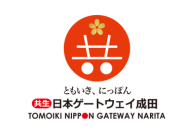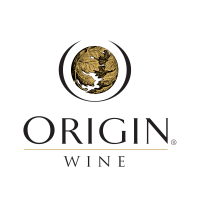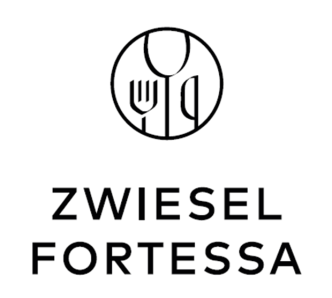What was interesting for the new generation in charge of the Cusiné family winery – namely winemakers María Elena Jiménez and Marta Casas, and their husbands Joan and Josep Cusiné – is that the ruins include the remains of furnaces (below) used to create ceramic tools and containers to transport food and beverages across the Mediterranean Sea.
“It was these discoveries that inspired us to produce our first natural wine fermented in clay amphorae,” Marta tells me.
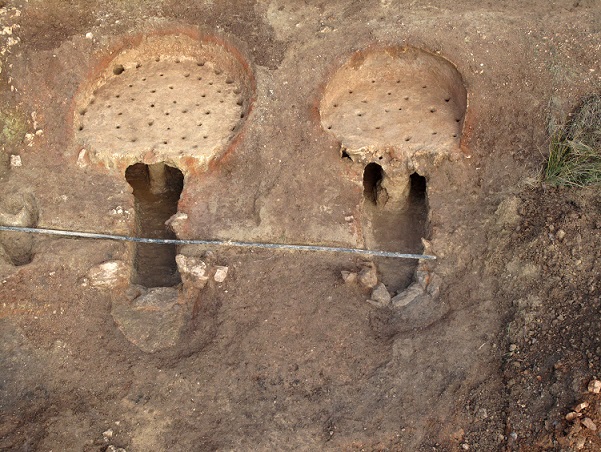
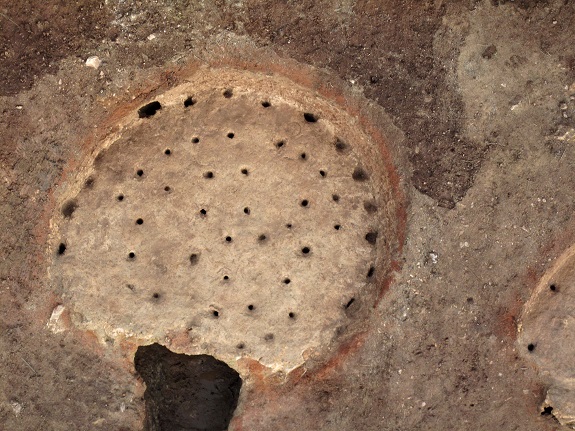
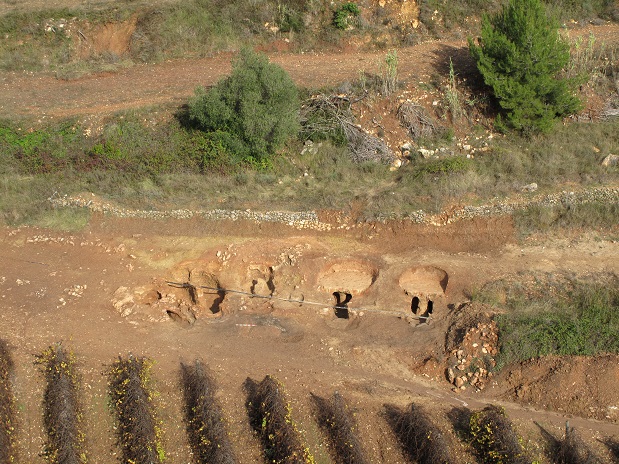
What’s more unusual is that it also inspired them to use their own clay to make the amphorae. The clay comes from one of the family’s five estates, Les Valls, which is located within the natural park of Foix – where there are 70ha of biodynamically-farmed vineyards and a 600ha forest.
“A ceramist from the area, and a friend of the family, made us the first amphorae with common clay and clay extracted from our own estate, Les Valls,” Marta continues. “It’s the same clay type that the Iberians used to create their ceramic containers.”
Parés Baltà’s annual output is about 300,000 bottles, with just 4,500-5,000 bottles of amphorae wines – all made from Xarel-lo grapes – split across three labels:
- Amphora Roja, made in red clay from the family estate;
- Amphora Brisat, made with extended skin contact;
- Amphora Gris, made in common clay.
“The next harvest, we made our first natural wine using indigenous yeast from the vineyard with minimal intervention in the amphorae and without adding sulphites,” Marta adds.
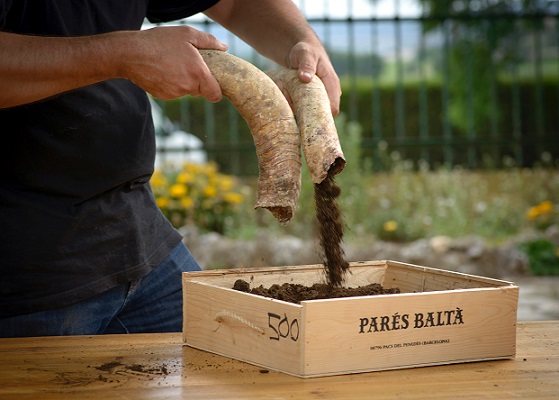
In 2013 – the first year the vineyards were certified biodynamic by Demeter – Parés Baltà produced the first vintage of Amphora Roja. They used a pied de cuve to start the fermentation. They had left the crushed grapes in a food-grade plastic bowl in the vineyard to ensure only vineyard yeasts kickstarted the fermentation, “but the extreme heat of that September caused it to oxidize,” Marta remembers.
The following year they moved the pied de cuve into a cool spot in the winery. It still oxidized “but its aroma, texture and taste was fabulous, therefore we inoculated it and the result was the clearest and cleanest wine in the winery – and above all it was a natural wine”, Marta says.
She believes the porosity of the amphorae also aids the clarification process: “The porosity causes a hyper-oxidation and leads all the oxidizable particles to the bottom. As a result, we get a crystal-clear wine.”
She goes on to explain the evolution of the experiments and the development of the amphorae line...
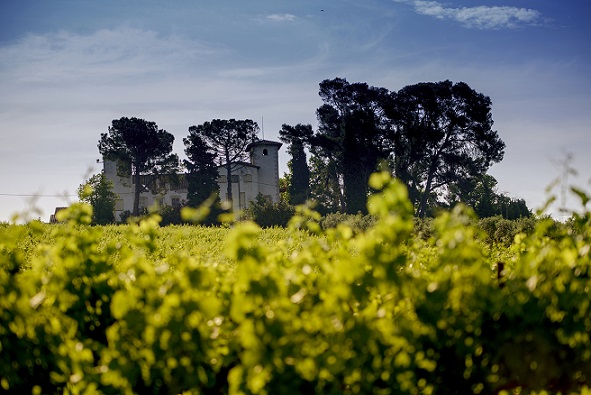
“In 2015, we kept the head submerged in the pied de cuve, always keeping the skins moist and prevented the skins getting an orange colour due to contact with the air.” The result was a wine “intense in aromas”.
“In 2017, we realised that those skins we immersed were delicious in aroma and flavours, and decided to take advantage of them, making the first skin-contact white wines from the winery (above). Since then, Amphora Brisat is also part of our portfolio year after year.
“In the 2020 vintage, we produced a skin-contact white wine in stainless steel as well… It has been an experimental vinification and this year it won’t be released.”
Parés Baltà now has 13 amphorae in its cellar, mostly with 350L capacity.
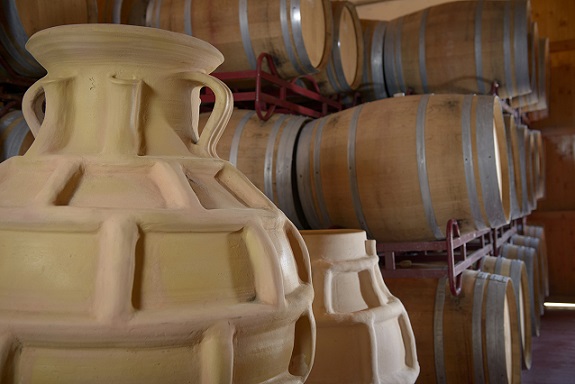
Like all their wines, these microcuvée are vegan-friendly. “We are the heirs to Grandpa Joan’s philosophy,” Marta says, recalling her husband’s grandfather, who worked in the vineyards from the age of about seven until he was in his 80s. “He said that a glass of wine should contain only fermented grape must and should be capable of transmitting emotions. To achieve this, he said, we must treat the vineyard like a living being, this is the only way we can make a wine with vitality, alive and expressive.”
Marta and Maria Elena became winemakers after falling in love with Josep and Joan Cusiné. Marta, whose grandfather had a small vineyard, went to university in Barcelona to study pharmacy and met Josep there. Maria Elena is a chemical engineer who met and married Joan – falling in love with wine at the same time. Both Marta and Maria Elena went on to study winemaking in Tarragona before becoming the winemakers at Parés Baltà.
'We want to experiment with these varieties due to climate change'
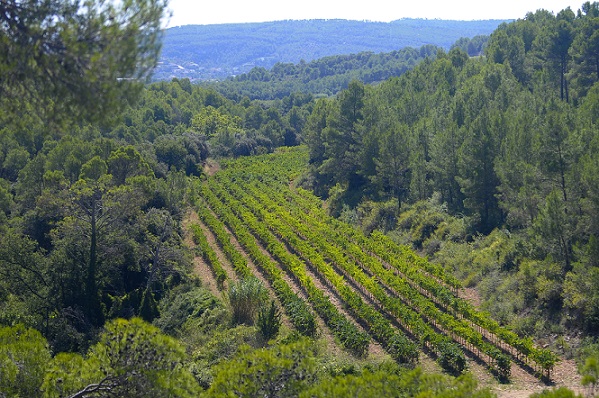
Their experiments will also soon involve ancient grape varieties, such as Sumoll, Malvasia de Sitges and Carignan Blanc, as well as the almost forgotten varieties of Moneu and Forcada, which were planted in 2018/2019. Marta describes these as “two varieties that are both originally from Penedès wine region, highly drought resistant and late ripening. We want to experiment with these varieties due to climate change.”
As for the ruins, the archaeologists stopped their digs during the Covid-19 pandemic and are awaiting government funding before resuming their work. The Cusiné family hopes the site will one day become a museum, displaying the artefacts and teaching about the civilization that once lived in the hills where the vineyards now stand.


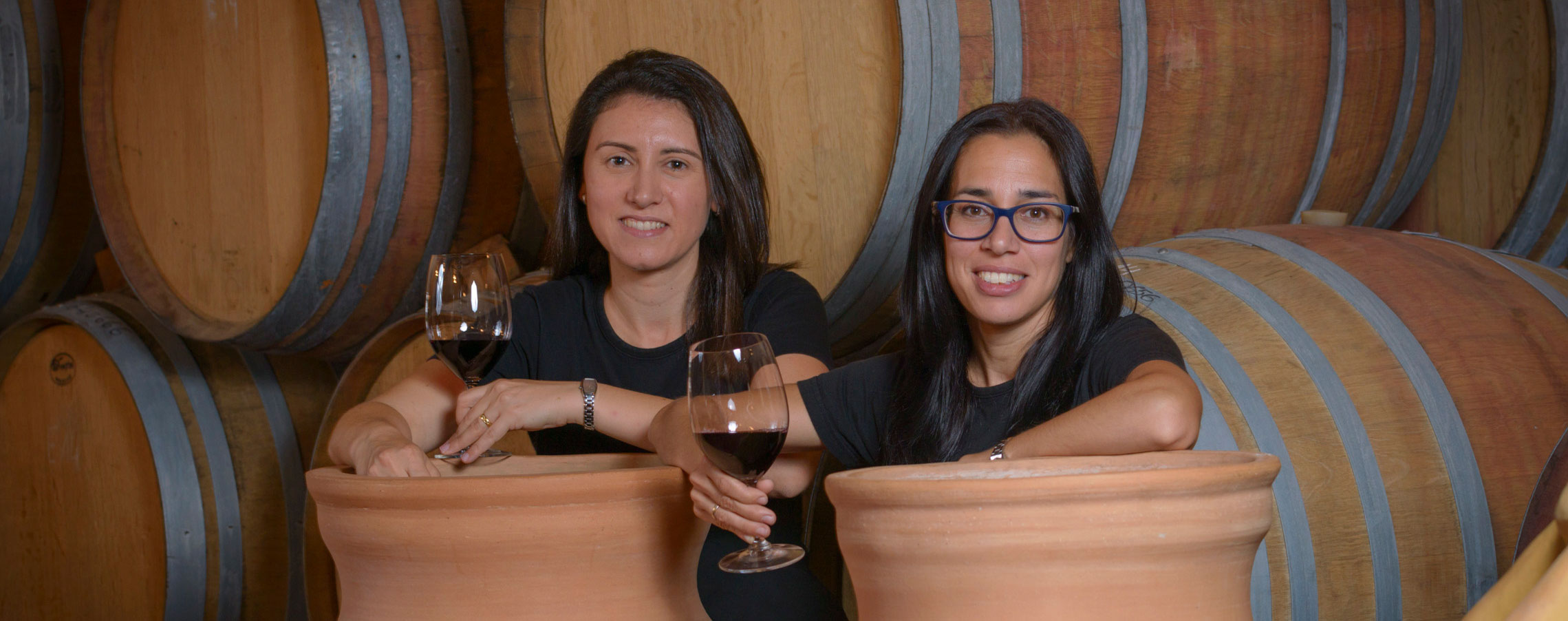




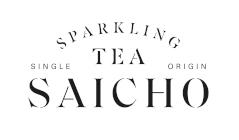




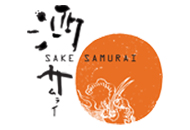
.png)
